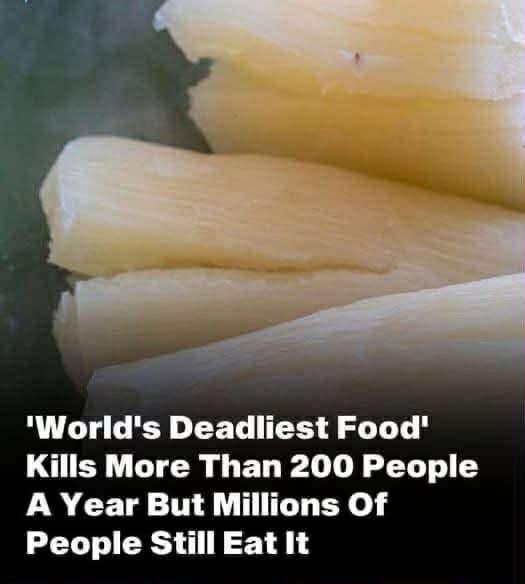Cassava, a root vegetable native to Central and South America, is widely consumed across tropical regions and is a staple for over 500 million people worldwide.
Rich in vitamin C and copper, cassava is used similarly to potatoes and is especially popular in countries like Nigeria, Thailand, and Indonesia.
Despite its nutritional benefits, cassava is known as the “world’s deadliest food” due to the dangers it poses when eaten raw. It contains cyanogenic glucosides, compounds that can release toxic cyanide if not properly processed. According to the World Health Organization (WHO), about 200 people die annually from cassava-related cyanide poisoning.
WHO explains that these harmful compounds serve as a natural defense mechanism for the plant. Without adequate processing—especially during times of famine or conflict when shortcuts may be taken—consumption can lead to serious health issues, including acute poisoning and neurological diseases.
One such condition is konzo, an irreversible and sudden paralysis of the legs linked to consuming improperly processed “bitter” cassava and having a low-protein diet. Konzo is most common in areas of extreme poverty and often appears in epidemic form.
Fortunately, cassava is safe to eat when prepared correctly. Methods like soaking peeled cassava in water for at least 24 hours, boiling, or sun-drying significantly reduce its cyanide content. When consumed in moderation and processed properly, cassava can be a valuable source of carbohydrates, fiber, vitamins, and minerals—contributing to a balanced, nutritious diet.


